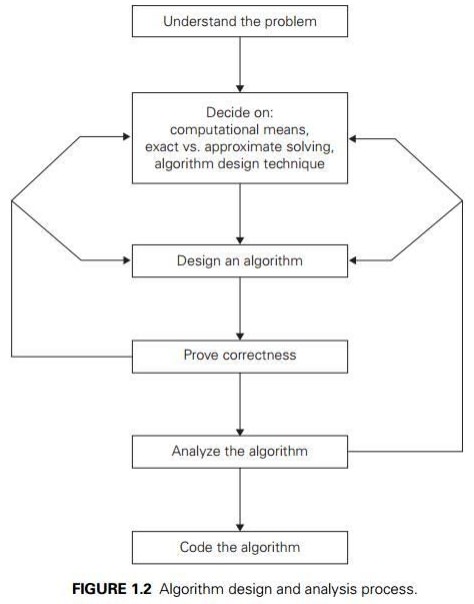Chapter: Problem Solving and Python Programming : Algorithmic Problem Solving
Algorithmic problem solving
ALGORITHMIC
PROBLEM SOLVING:
Algorithmic
problem solving is solving problem that require the formulation of an algorithm
for the solution.

Understanding the Problem
v It is the process of finding the input of the
problem that the algorithm solves.
v It is very important to specify exactly the
set of inputs the algorithm needs to handle.
v A correct algorithm is not one that works most
of the time, but one that works correctly for all legitimate inputs.
Ascertaining the Capabilities of the Computational Device
v If the instructions are executed one after
another, it is called sequential algorithm.
v If the instructions are executed concurrently,
it is called parallel algorithm.
Choosing between Exact and Approximate Problem Solving
v The next principal decision is to choose
between solving the problem exactly or solving it approximately.
v Based on this, the algorithms are classified
as exact algorithm and approximation algorithm.
Deciding a data structure:
v Data structure plays a vital role in designing
and analysis the algorithms.
v Some of the algorithm design techniques also
depend on the structuring data specifying a problem’s instance
v Algorithm+ Data structure=programs.
Algorithm Design Techniques
v An algorithm design technique (or
“strategy” or “paradigm”) is a general approach to solving problems
algorithmically that is applicable to a variety of problems from different
areas of computing.
v Learning these techniques is of utmost
importance for the following reasons.
v First, they provide guidance for designing
algorithms for new problems,
v Second, algorithms are the cornerstone of
computer science
Methods of Specifying an Algorithm
v Pseudocode is a mixture of a natural language and
programming language-like constructs. Pseudocode is usually
more precise than natural language, and its usage often yields more succinct
algorithm descriptions.
v In the earlier days of computing, the dominant
vehicle for specifying algorithms was a flowchart, a method of expressing an
algorithm by a collection of connected geometric shapes containing descriptions
of the algorithm’s steps.
v Programming
language can be fed into an
electronic computer directly. Instead, it
needs to be converted into a computer program written in a particular computer
language. We can look at such a program as yet another way of specifying the algorithm,
although it is preferable to consider it as the algorithm’s implementation.
Proving an Algorithm’s Correctness
v Once an algorithm has been specified, you have
to prove its correctness. That is, you have to prove that the algorithm
yields a required result for every legitimate input in a finite amount of time.
v A common technique for proving correctness is
to use mathematical induction because an algorithm’s iterations provide a
natural sequence of steps needed for such proofs.
v It might be worth mentioning that although
tracing the algorithm’s performance for a few specific inputs can be a very
worthwhile activity, it cannot prove the algorithm’s correctness conclusively.
But in order to show that an algorithm is incorrect, you need just one instance
of its input for which the algorithm fails.
Analysing an Algorithm
1. Efficiency.
Time efficiency, indicating how fast the algorithm runs,
Space efficiency, indicating how much extra memory it uses.
2. simplicity.
v An algorithm should be precisely defined and
investigated with mathematical expressions.
v Simpler algorithms are easier to understand and
easier to program.
v Simple algorithms usually contain fewer bugs.
Coding an Algorithm
v Most algorithms are destined to be ultimately
implemented as computer programs. Programming an algorithm presents both a
peril and an opportunity.
v A working program provides an additional
opportunity in allowing an empirical analysis of the underlying algorithm. Such
an analysis is based on timing the program on several inputs and then analysing
the results obtained.
Related Topics